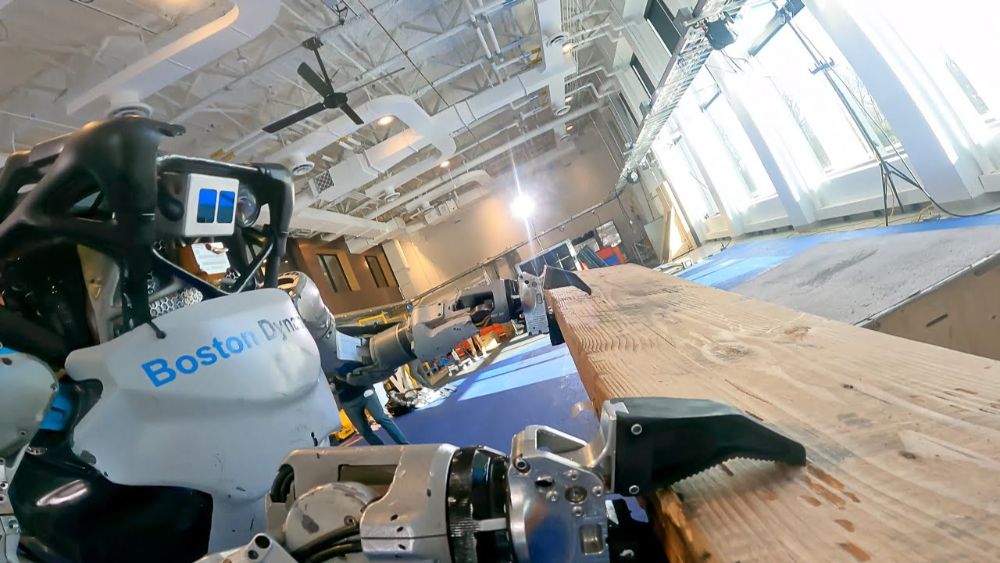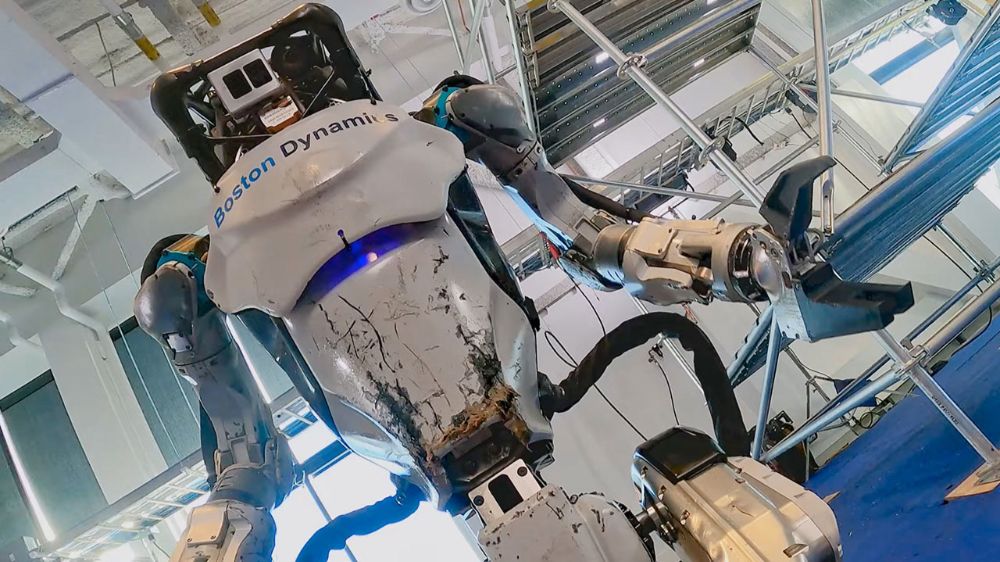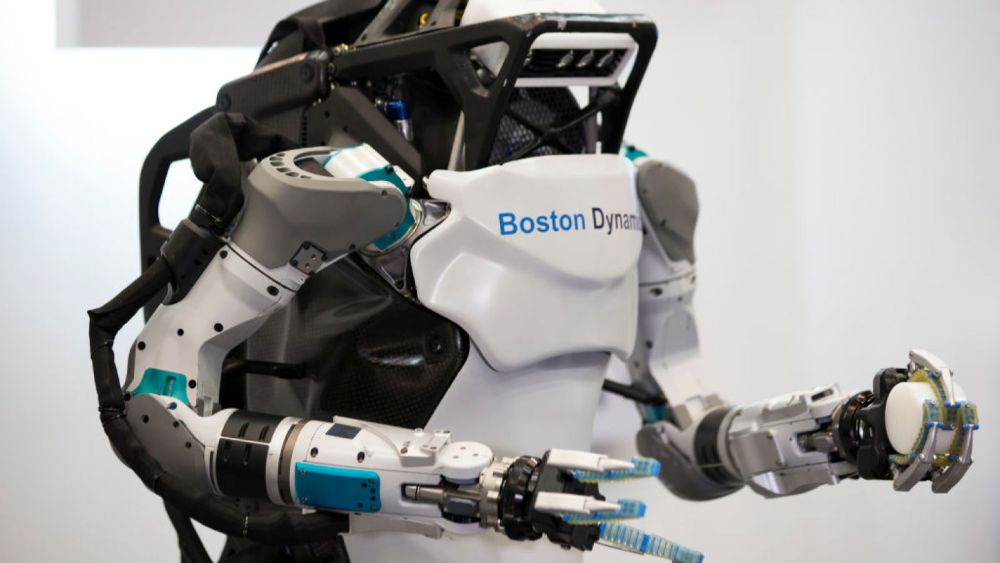Boston Dynamics’ leading humanoid robot, Atlas, effortlessly manoeuvres heavy automotive struts in recently unveiled footage. The demonstration showcases Atlas relying solely on its internal sensors to identify objects before deftly gripping and transferring the struts from storage to a nearby flow cart. Viewers are treated to a unique perspective, witnessing the action through Atlas’ own eyes.

Launched to the public stage in July 2013, Atlas has undergone continuous refinement, evolving into what Boston Dynamics proudly hails as the “world’s most dynamic humanoid robot.” While past exhibitions featured Atlas engaging in feats like running and executing parkour, this latest footage spotlights its adeptness in industrial settings, a domain where its practical applications hold significant promise.
Notably, the video underscores a shift towards the integration of humanoid robots into factory and warehouse environments, where tasks like handling automotive components represent tangible real-world challenges. While perhaps less visually dazzling than its previous exploits, Atlas’ seamless manipulation of struts underscores its potential to revolutionize industrial workflows.

Boston Dynamics’ initiative with Atlas mirrors a broader trend in the robotics landscape. Competitors such as Tesla and Figure have also ventured into the realm of humanoid robotics tailored for industrial use. Tesla’s unveiling of its Optimus Gen-2 robot in December 2023 showcased capabilities ranging from walking and squatting to delicate object manipulation, while Figure’s Figure 01 machine, introduced in January, astounded audiences by learning tasks through observation, a feat enabled by artificial intelligence.

Marc Theermann, Boston Dynamics’ chief strategy officer, humorously reflected on the decision to focus on “real-world manipulation challenges” in the Atlas demonstration, eschewing gimmicks like coffee-making or egg-handling. This strategic emphasis underscores a commitment to practical applications, positioning Atlas as a pivotal player in the ongoing evolution of industrial automation.
As Atlas and its contemporaries continue to push the boundaries of humanoid robotics, their integration into industrial settings promises to redefine productivity and efficiency, heralding a new era of human-robot collaboration.
